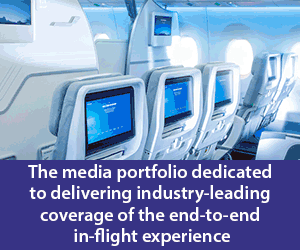Viasat has released its fiscal year 2019 third quarter earnings, reporting a 45% increase in revenue year-over-year driven by growth across all segments.
In Satellite Services, revenues were a record US$178 million, up 23% from the prior year period and 9% sequentially from Q2, helped by the company’s fast growing IFC business.
The company ended the quarter with 1,123 tails in service, nearly double the number last year and up 225 from the second quarter. American Airlines is now Viasat’s largest IFC customer with over 380 aircraft in service and growing.
As Shawn Duffy, senior vice president and chief financial officer explained, Commercial Networks, quarterly revenues were up 129% year-over-year, driven by accelerated terminal sales to its IFC partners, record revenues in its antenna systems division and growing satellite network product sales. Delivery of 234 (ph) IFC terminals to airline partners was another record.
Strong position
In an earnings call with analysts, Mark Dankberg, chairman of the board and chief executive officer noted: “Q3 was another really good quarter. We brought another 225 commercial airplanes into service. That gets us to a total of over 1,123 tails, a 91% increase from the same period last year. Third quarter was exceptional in that we captured about 80% of net additions. We anticipate that installations in the current fiscal year ’19 fourth quarter will also be robust.
“After that, we will have completed a lot of our retrofit installations on American Airlines. So our growth rate will moderate. We’ll be in a very strong position in North America though. Our earned reputation for quality and performance has enabled us to extend key relationships with existing airline partners and today, we announced expanded contracts with both United Airlines and Aeromexico. On United, we’ll bring our latest generation in-flight entertainment and connectivity system to an additional 34 A319 aircraft that will be joining United’s Airbus fleet, and Aeromexico, executed an option to increase the total number of Viasat-equipped Boeing 737 MAX aircraft from 18 to a total of 60 planes, its full fleet of the latest narrow-body.
“We’re aiming to leverage our success in North America, Europe and Australia into comparable performance on a global basis. Based on our existing Ku and Ka-band global network, combined with the progress on the first two ViaSat-3 satellites and now having executed a third Asia-Pacific satellite agreement with Boeing, we believe we are well positioned to capture a good portion of the global market.
“Also, we are very intent on helping our existing customers leverage the capabilities of our network to gain competitive advantages relative to carriers with less capable systems. So one of the peculiarities of in-flight connectivity is that even when a relatively small fraction of passengers buy it, high quality Wi-Fi extols a very meaningful impact on passengers’ choice of airlines. JetBlue and Qantas leverage our in-flight connectivity system including free Wi-Fi as one of their amenities and by partnerships with valuable Internet brands, which help increase passenger engagement.
“We believe increasing passenger engagement with high quality Internet service can be a powerful competitive advantage for all our airline partners compared with competing carriers whose in-flight connectivity system can’t reliably serve a high proportion of passengers. And airlines can use the Internet and all it enables to differentiate themselves based on the broader partnerships, relationships and characteristics they use to define and project their valuable brands. Our rapid growth is enabling an opportunity to engage hundreds of millions of passengers a year across multiple airlines around the world and that group of people being transported at 30,000 feet for hours at a time is an appealing captive audience for many Internet, media, and consumer brands.”
In further prepared comments, he stated: “We think we can outperform competitors and turn great in-flight connectivity into compelling passenger engagement and create an even more powerful intangible advantage for our airline partners. We’re really pleased with the progress in the market, the prospects for innovation on the airline and internet brand sites and are enthusiastic about the opportunities ahead.”





